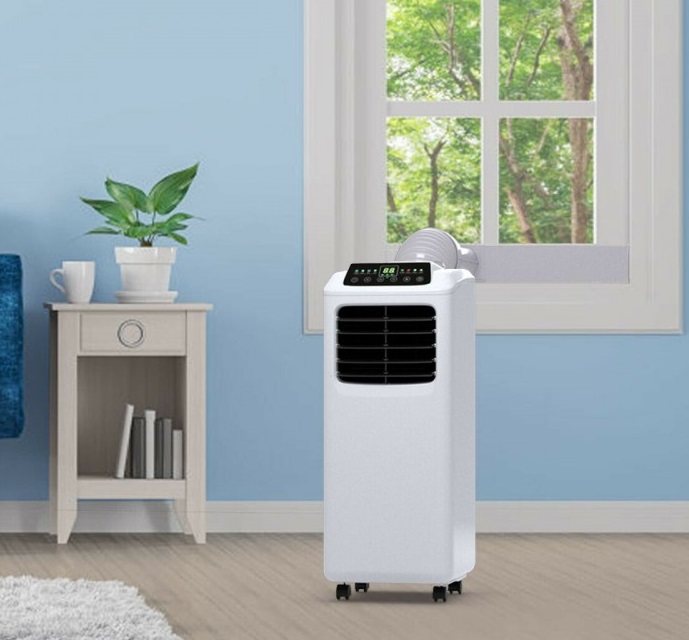

Ductless air conditioners, also sometimes called ductless mini-split AC systems, are energy-efficient appliances. They allow you better control over your heating and cooling needs and are ideal for additions or smaller homes, but can be used for larger spaces and houses, too. Some homes don’t have ductwork, and that’s when a ductless mini-split AC system may be a great choice. If you’ve ever asked yourself: “How do ductless air conditioners work?”, well, it’s pretty simple. In a traditional AC system with ductwork, warm air is pulled from the indoor space into the AC unit, which cools the air by passing it over evaporator coils. The cooled air is then distributed through the ductwork of your home to your vents. Then the outside AC unit expels the hot air.
Ductless systems work the same way, but instead of relying on a large AC unit to pass the air through ductwork, it pumps the air directly where it’s needed, skipping any waste and quickly heating or cooling your space. This is why it can be such a great choice for houses that can’t rely on ductwork.
Ductless air conditioners are different than your typical air conditioning system. Those use vents, ductwork, and a large external air conditioner unit to cool your home. Whereas ductless systems use the following components to cool your home their own way:
As you can see, a ductless system works very similar to a more traditional air conditioner system, but without the need for ductwork throughout your walls, ceilings, and floors for the cooled air to travel room to room. This is why ductless systems can be such a great choice for smaller homes or older homes without existing ductwork.
A ductless mini-split AC system installation can be a great choice for smaller houses that either don’t have existing ductwork or can’t have traditional ductwork. Some benefits of this modern HVAC system can include:
But there are some drawbacks when it comes to ductless systems too, which is something to keep in mind. A ductless mini-split AC system requires professional installation, even though it doesn’t require ductwork to be added, removed, or rearranged in your home. This is because there may need to be small holes drilled to pass copper tubing, communication and power lines, and even condensation drain lines, which is something that should be left up to a pro. There are also some other drawbacks as well, including:
The pros and cons of ductless systems should all be weighed when considering what air conditioning system is right for the needs of you and your home and to find the best comfort all summer long.
There are some times when a ductless system is not only a good choice for you and your home, it may be the best choice over a more traditional AC system. Let’s find out why:
As you can see, ductless mini-split cooling systems offer a variety of cooling opportunities for many homes and spaces. If your home is lacking ductwork, or you want cooling power without difficult installations, then a ductless mini-split AC system may be for you. Or if you’ve put an addition on your house, or have family members that constantly squabble over the temperature of a room, it may be the best choice for your home. Ductless systems may be expensive to install, but they often provide better air quality and can save you money on your utility bills. Now that you understand how a ductless air conditioner system works, you can decide whether it’s right for you and your home’s needs.





